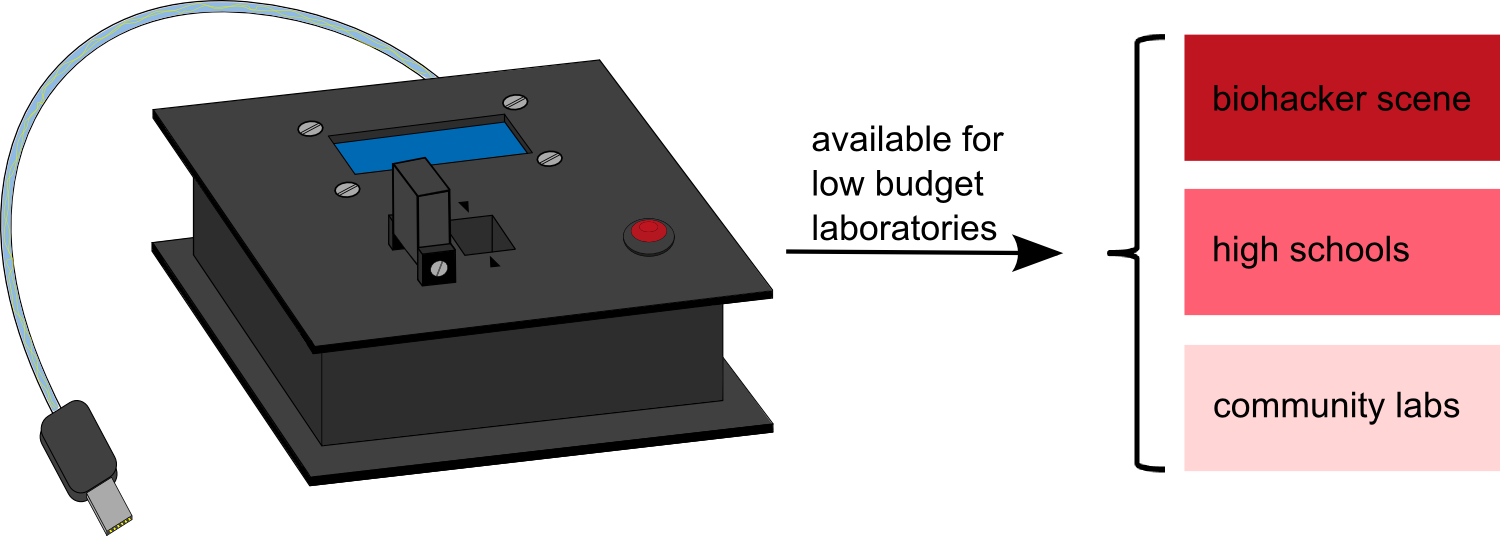Economical View
The economical considerations regarding our project were carried out according to the motto:
Make the world a better place - Open access to scientific improvement
In the center of every economic analysis are the customers and their needs and desires. Every commercial company is interested to satisfy and deal with all customer needs for better sales figures, and in order to maintain regular clientele. Both measures aim for higher financial profits. On the global seller’s market of technical laboratory equipment there is a permanent competition between the existing providers. First of all depending on the technical improvement followed by price wars. Always high price/performance ratios are catching customer and influence the buying decision.
Take a look at cost calculations for technical equipment including development, production, transport, warehousing and sale. Usually, you will find are low material costs but really high personnel, transport and warehousing costs. In general, these factors are making technical equipment for labs really expensive.
We follow a strategy to circumvent unnecessary costs for customers by realizing a social vision. In accordance with the principle of open hardware, information where to get the necessary components, quantities, a step-by-step technical construction manual and circuit diagrams could be published online for free. So our profit not of financial nature but is instead based on recognition and on motivating other iGEM teams and companies to spread the idea of open hardware, too.
Everyone interested in biological work should be able to use basic equipment such as photometers. On the one hand, commercially obtainable spectrophotometers like [http://www.opticsplanet.com/unico-model-s-1205-spectrophotometer-5-nm-bandpass.html UNICO S-1205], for example, costs 1.249 $ or more, and can measure optical density only. On the other hand, our OD/F Device can measure optical density as well as fluorescence for less than 100 $. Therefore, we present a solution for low budget institutions like schools, universities and community labs..
The measurement device WatsOn for our 2D biosensor, too, has been designed accordingly. So far, no comparable devices could be found on the commercial market. Here, we definitely have a vanguard role. Everybody with a little manual dexterity can follow the given instructions and create their own WatsOn for less than 300 $. However, please always remind yourself of the respective safety aspectics when dealing with GMOs and human pathogens.
|
 "
"




